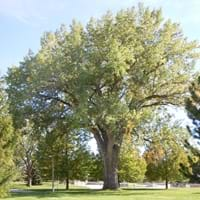Life Span
Perennial
Perennial
Origin
Caribbean, South America
Northeastern United States, Mid-Atlantic United States, Southeastern United States, Central United States, Canada, Mexico
Types
Pinks Mammoth, African Pride, Late Gold, Geffner, Hilary White
Plains Cottonwood, Rio Grande cottonwood
Habitat
Warm and moist climatic conditions
bottomlands, Floodplain, Hardwood forests, Riverbanks
USDA Hardiness Zone
10-13
3-9
Sunset Zone
Not Available
1a, 1b, 2a, 2b, 3a, 3b, 4, 5, 6, 7, 8, 9, 10, 11, 14, 15, 16, 17, 18, 19, 20, 21
Habit
Upright/Erect
Upright/Erect
Flower Color
Yellow green
Red, Green
Flower Color Modifier
Bicolor
Bicolor
Fruit Color
Light Green, Sea Green
White
Leaf Color in Spring
Light Green
Green, Gray
Leaf Color in Summer
Light Green
Green
Leaf Color in Fall
Light Green
Yellow
Leaf Color in Winter
Light Green
Not Available
Leaf Shape
oblong or narrow-lanceolate
Toothed curved and flat petiole
Plant Season
Summer
Summer, Fall
Sunlight
Full Sun, Partial Sun
Full Sun
Growth Rate
Medium
Very Fast
Type of Soil
Loam, Sand
Loam, Sand
The pH of Soil
Acidic, Neutral, Alkaline
Acidic, Neutral
Soil Drainage
Well drained
Average
Bloom Time
Early Summer, Summer
Early Spring
Tolerances
Drought
Drought, Soil Compaction, Wet Site
Where to Plant?
Container
Ground
How to Plant?
Seedlings
Seedlings, Stem Planting
Plant Maintenance
Medium
Low
Watering Requirements
Do Not over Water, Does not require regular watering
Keep ground moist, Requires regular watering, Requires watering in the growing season, Water daily during growing season, Water Deeply, Water more in summer
In Summer
Lots of watering
Ample Water
In Spring
Moderate
Ample Water
In Winter
Average Water
Average Water
Soil pH
Acidic, Neutral, Alkaline
Acidic, Neutral
Soil Type
Loam, Sand
Loam, Sand
Soil Drainage Capacity
Well drained
Average
Sun Exposure
Full Sun, Partial Sun
Full Sun
Pruning
Prune young trees into an open vase shape
Remove dead branches, Remove hanging branches
Fertilizers
Nitrogen
fertilize in growing season, Nitrogen
Pests and Diseases
Anthracnose, Diplodia rot, Leaf spot
Aphids, Borers, Caterpillars, Insects
Plant Tolerance
Drought
Drought, Soil Compaction, Wet Site
Flowers
Insignificant
None
Flower Petal Number
Single
Not Available
Foliage Texture
Medium
Medium
Foliage Sheen
Matte
Glossy
Attracts
Fruit Bats
Not Available
Allergy
Oral Allergy
Hay fever, Headache, Runny nose, sneezing
Aesthetic Uses
Not Used For Aesthetic Purpose
Landscape Designing
Beauty Benefits
Promotes Healthy Hair, Promotes healthy skin
No Beauty Benefits
Environmental Uses
Air purification
Air purification, Forms dense stands, Prevent Soil Erosion, Shadow Tree, Shelter for wildlife, Wildlife, Windbreak
Medicinal Uses
Diabetes, Diarrhea
Anodyne, Anthelmintic, anti-inflammatory, Febrifuge
Part of Plant Used
Bark, Fruits, Seeds
Inner Bark, Leaves, Seeds
Other Uses
Used to make hair tonic, Used to promote healthy blood flow during menstruation
Biomass for fuel, Used as firewood, Used As Food
Used As Indoor Plant
No
No
Used As Outdoor Plant
Yes
Yes
Garden Design
Fruit / Fruit Tree, Shade Trees, Tropical
Screening / Wind Break, Shade Trees
Botanical Name
ANNONA squamosa
POPULUS deltoides
Common Name
Sugar Apple
Eastern Cottonwood
In Hindi
सीताफल
Eastern Cottonwood
In German
Zuckerapfel
Eastern Cottonwood
In French
Sugar Apple
Cottonwood Orient
In Spanish
Manzana de azúcar
Cottonwood del Este
In Greek
ζάχαρη της Apple
Ανατολική Cottonwood
In Portuguese
Pinha
Cottonwood Oriental
In Polish
Cukier Jabłko
Eastern Cottonwood
In Latin
Sugar Apple
Orientalium Poplar
Phylum
Magnoliophyta
Anthophyta
Class
Magnoliopsida
Dicotyledonae
Order
Magnoliales
Salicales
Family
Annonaceae
Salicaceae
Clade
Angiosperms, Magnoliids
Angiosperms, Eudicots, Rosids
Tribe
Abreae
Not Available
Subfamily
Maloideae
Salicoideae
Number of Species
Not Available
Importance of Sugar Apple and Eastern Cottonwood
Want to have the most appropriate plant for your garden? You might want to know the importance of Sugar Apple and Eastern Cottonwood. Basically, these two plants vary in many aspects. Compare Sugar Apple and Eastern Cottonwood as they differ in many characteristics such as their life, care, benefits, facts, etc. Every gardener must at least have the slightest clue about the plants he wants to plant in his garden. Compare their benefits, which differ in many ways like facts and uses. The medicinal use of Sugar Apple is Diabetes and Diarrhea whereas of Eastern Cottonwood is Anodyne, Anthelmintic, anti-inflammatory and Febrifuge. Sugar Apple has beauty benefits as follows: Promotes Healthy Hair and Promotes healthy skin while Eastern Cottonwood has beauty benefits as follows: Promotes Healthy Hair and Promotes healthy skin.
Compare Facts of Sugar Apple vs Eastern Cottonwood
How to choose the best garden plant for your garden depending upon its facts? Here garden plant comparison will help you to solve this query. Compare the facts of Sugar Apple vs Eastern Cottonwood and know which one to choose. As garden plants have benefits and other uses, allergy is also a major drawback of plants for some people. Allergic reactions of Sugar Apple are Oral Allergy whereas of Eastern Cottonwood have Hay fever, Headache, Runny nose and sneezing respectively. Having a fruit bearing plant in your garden can be a plus point of your garden. Sugar Apple has no showy fruits and Eastern Cottonwood has no showy fruits. Also Sugar Apple is not flowering and Eastern Cottonwood is not flowering . You can compare Sugar Apple and Eastern Cottonwood facts and facts of other plants too.





